HMD Global have take great pains to make 2018 the year of Nokia and its probably no secret that we here at Ausdroid have become fans of what they’re doing with the Nokia brand. There’s been some misses, but overall, they’ve shown what quality products a young, emerging company can bring to the market
After reviewing the Nokia 5.1, the predecessor to last years Nokia 5, I found there’s a lot of things going for it, though there’s some issues which you can read in our full review.
When Nokia announced the Nokia 5.1 Plus a couple of weeks back, it piqued my interest. Nokia was claiming this device would be a phone for those who need the extra performance for mobile gaming. Given I spend a good deal of time playing games on mobile, and gaming is what the phone has been designed for, I wanted to see if it really could provide a great mobile gaming experience.
So. Can the Nokia be truly an affordable mobile gaming device? Let’s find out.
Design
When unboxing the Nokia 5.1 Plus, I noticed that unlike the Nokia 5.1 which was made with a unibody metal housing with a very cool, sleek looking glass front, the Nokia 5.1 Plus used an all glass design with a sleek finish on both front and rear.
The unibody glass design can of course be an issue with durability, but the plan is to be careful, and if you’re buying one we’d recommend a case. The glass feels absolutely fantastic though, sort of futuristic and sleek but in that mid-range price bracket, I instantly noticed the fingerprint marks and smudges appearing all over the rear of the device whilst setting it up, so bear that in mind – it seems cases are definitely a must for this phone.
Another thing I noticed, that being a straight flat design with glass front and back with a high gloss finished plastic curved design on the Nokia 5.1 Plus made it feel a little awkward to hold in my hand, with the worry of slippage and dropping of the device a real concern. I would have preferred an all metal housing frame, as this will eliminate to certain degree the slippage issue, but that is just a personal preference.
A 5.8-inch IPS LCD HD+ 2.5D curved display dominates the front of the phone and looks stunning. It’s both clear and bright, though hard to read in full sunlight, with the screen very reflective. Even trying to adjust the screen brightness levels manually doesn’t assist. Adaptive brightness controls can be a bit of a hit and miss.
Like many phones this year, the Nokia 5.1 has a notch, however it was hard to get the notch settings to turn on during the review and at first I was unsure as to why that would be case. It turns out that HMD Global have disabled the notch on the Nokia 5.1 Plus for the Australian/NZ markets, along with a few other countries as well. This is a little surprising given the status of the notch. Nokia/HMD Global have advised Ausdroid:
“In our first two years, we have strived to put our fans first. In Australia, the Nokia 5.1 Plus comes without a notched screen because that was important to our customers. We actively listen to feedback and our design choices will continue to be inspired by what we see and hear from the people who love our products.”
Within the area where the notch would be, is a front speaker for phone calls and the front facing 8MP Selfie camera.
The rear has the dual 13/5MP camera sensors vertically aligned down the centre, with the LED flash below. A fingerprint sensor sits just below the camera module and is well placed for easy access when unlocking the phone.
Of course there’s branding on the rear, but it’s minimal with a simple ‘Nokia’ logo running vertically up the phone, while a horizontally aligned Android One logo sits towards the bottom. OCD wise, this should probably be aligned together, but that’s for the Nokia designers to worry about.
The power button and volume rocker are made of plastic, and are located on the right hand side of the phone. It’s an easy way to meet a price point, but metal buttons for next years model is on my wishlist. The microSD/SIM card tray is on the left, leaving a pretty clean line to the phones silhouette.
The phone still includes a 3.5mm audio jack on the top of the phone, a big plus for many people – though we can debate the location of the jack, in the end it’s a personal preference.
HMD Global has finally introduced USB-C to their 5-series phones, a welcome change to charge the decently sized 3,060mAh battery. A single bottom firing loud speaker is also on the bottom of the phone alongside a mic.
Overall, when it comes to design the Nokia 5.1 Plus feels high end and looks the part in every way, shape and form. HMD Global’s designers just keep getting better and better.
What’s inside
The Nokia 5.1 Plus is powered by MediaTek’s Helio P60 octa-core processor (4 x A73 1.8GHz + 4 x A53 1.8GHz), with 3GB RAM. This config for everyday use, allowed the phone to power through apps easily, though there was a touch of lag here and there with some apps taking a few seconds longer to launch, or the keyboard taking a few beats too long to launch.
Of course the main selling point for the Nokia 5.1 Plus is gaming. Having installed and played games like Asphalt 9: Legends, Rayman Adventures, Sonic the Hedgehog Classic, along with SimCity: Build It, it was able to handle these games with ease. There were still delays or lag in opening the app, but the actual performance once loaded was great.
For storage, the Nokia 5.1 plus comes with 32GB of onboard storage which can easily be expanded through to an impressive 400GB via microSD card. Unfortunately you can’t use the microSD card as adoptable storage, but maybe in a future update.
Lastly, an important feature for us here in Australia with a prevalance of Tap & Pay – the Nokia 5.1 Plus has no NFC.
Camera
The dual camera setup on the Nokia 5.1 Plus includes a 13MP sensor (f/2.0 aperture) with a secondary 5MP sensor for depth. The main sensor includes support for Phased Detect Auto-Focus (PDAF) which allows – in theory – for fast, in-focus shots on the fly. There’s also a rear LED flash for taking night shots as well.
Pictures taken are clear and bright, with colour reproduction quite good. However, in low light situations, there was some noise creeping into the picture, with a lack of detail in these type of photos.
The Nokia 5.1 Plus comes with a front 8MP camera, which has a f/2.2 aperture and the picture quality of those selfies taken with the front facing camera were quite good in good lighting conditions. However, say at nighttime or low lighting conditions, the front facing camera struggled.
The one major criticism I have with both the front and rear cameras, is the shutter speed being a bit too slow to respond, which is something that also occured with the Nokia 5.1 and I would implore Nokia/HMD Global to look at if this could be updated via software, or, if not focus on this for future devices.
The camera software includes Google Lens, beautify, dual front and rear picture or picture in picture shooting, 3 or 10 second delay and HDR settings, along with AR stickers which includes fun options like Sunflower, Panda face or Bulls horns. There is also live bokeh thanks to the dual-camera sensor, panorama and manual shooting modes as well as video recording which offers up to 1080p video recording (720p on the front) as well as options for time lapse or slow motion.
Android One
Shipped with Android One, the phone comes with Android 8.0 with the September security patch, but this is a Nokia and an update to the October security patch was immediately available, as was an update to Android 8.1.0, showing just how great the Android One platform is for updates.
It is unclear when the Nokia 5.1 Plus will be updated to Android One 9.0 (Pie) – though Android One devices generally get 3 years of security updates and 2 years of feature updates, so it’s likely it will, but we’re waiting on clarification.
With very little customisations with the firmware, the Nokia 5.1 Plus did offer some specific related Nokia apps and services such as FM radio – great for when attending sports events, a File Manager, and the Nokia Support app being the only Nokia specific apps already pre-installed.
Network Connectivity
Connectivity wise, the Nokia 5.1 Plus comes with dual-band WiFi a/b/g/n/ac and easily connected to my home WiFi network but also my parents WiFi which is with another provider.
The Nokia 5.1 Plus comes with LTE Cat 4 4G along with support for all the 3G networks – there’s 2G as well if you’re travelling, but we don’t have those networks here in Australia anymore. I use Optus for my carrier and the 4G connection was strong and held up quite well.
Bluetooth 4.2 LE with A2DP ensured a strong connection with both my bluetooth speaker and headphones without any drop outs.
Calls are crystal clear and appear to utilise HD Audio. There’s no VoLTE support on the Nokia 5.1 Plus – but we can’t have everything.
Battery
A non-removable Li-Ion 3060 mAh battery is included with support for fast charging via USB-C charger. The combination of a power efficient processor and display helps to ensure battery life is absolutely optimal for this phone.
My daily use consists of taking the phone off charge in the morning, say about 8am, I would find that with medium some some heavy usage, the Nokia 5.1 could last through the day without the need for additional charging till I got home say about 7-8pm with about 40-50% and on occasion, up to 60% charge still left.
Should I buy one?
The Nokia 5.1 Plus is a great phone. It’s so great in fact, that it far overshadows the Nokia 5.1 I reviewed a few months ago.
The camera is a little underwhelming as we’ve come to expect at this end of the range, but it works and it takes a decent shot. It also has a little more grunt for everyday usage and battery life is also fairly impressive.
If i was to choose between the Nokia 5.1 and the Nokia 5.1 Plus, I would probably pay the additional $50 to get the Nokia 5.1 Plus.
You can purchase the Nokia 5.1 Plus from the JB Hi-Fi website or your local store for $379 in either white or black colours.


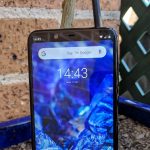
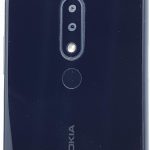
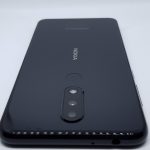
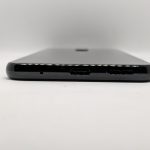
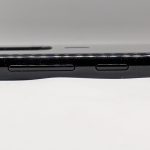
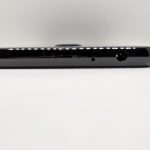









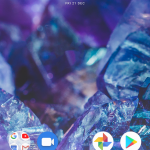
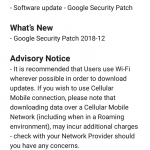
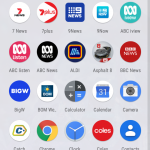
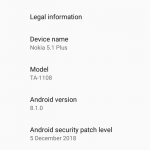
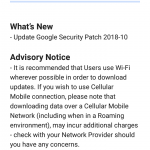




Nokia gets my tick of approval. USB-C at this price point is great. Being a pure Android One device, it’ll get updated to Android Pie and Android Q in a year’s time.